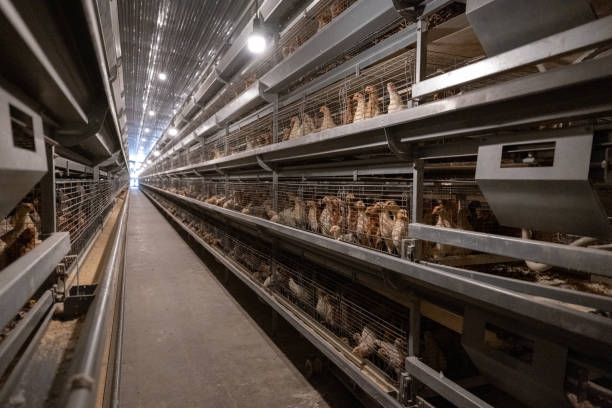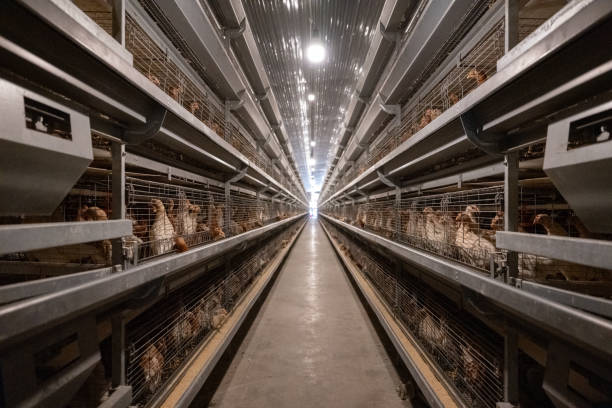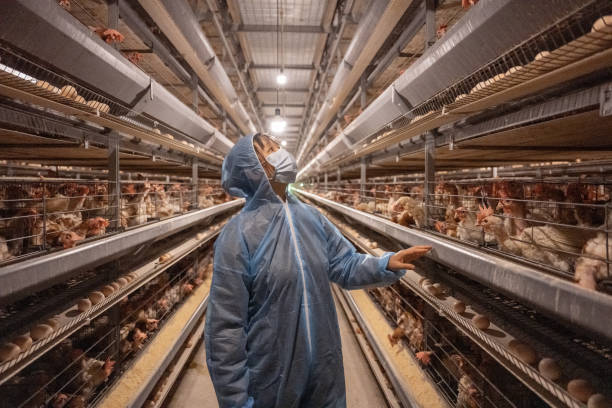
Maximize Your Profits: A Comprehensive Guide to Poultry Farming in South Africa
Maximize Your Profits: A Comprehensive Guide to Poultry Farming in South Africa
Poultry farming in South Africa presents a lucrative avenue for entrepreneurs and seasoned farmers alike. The demand for poultry products, including eggs and meat, remains consistently high, driven by population growth and evolving dietary preferences. However, success in this dynamic sector hinges on a strategic approach, encompassing everything from selecting the right breed to implementing efficient management practices. This comprehensive guide provides a roadmap to maximize profitability within the South African poultry farming landscape.
**Understanding the South African Poultry Market**
Before diving into the practical aspects of poultry farming, it’s crucial to understand the current market dynamics in South Africa. The poultry sector is characterized by a mix of large-scale commercial operations and smaller, emerging farmers. Key trends shaping the market include:
* **Growing Demand:** The demand for chicken meat and eggs is steadily increasing, fueled by factors such as affordability compared to other protein sources and increasing urbanization.
* **Import Competition:** South Africa’s poultry industry faces significant competition from imports, particularly from countries with lower production costs. Understanding trade policies and import tariffs is essential.
* **Consumer Preferences:** Consumers are increasingly aware of food safety, animal welfare, and environmental sustainability. This trend is driving demand for free-range, organic, and locally sourced poultry products.
* **Government Support:** The South African government offers various support programs and initiatives to promote agricultural development, including poultry farming. Accessing these resources can provide a significant boost to your enterprise.

**Choosing the Right Poultry System: Layer vs. Broiler**
The first critical decision involves selecting the type of poultry farming that best aligns with your resources, expertise, and market opportunities. The two primary options are layer farming (egg production) and broiler farming (meat production).
* **Layer Farming:** Layer chickens are specifically bred for egg production. They typically start laying eggs around 18-20 weeks of age and continue for approximately 12-18 months. Layer farming requires a longer-term investment and a consistent supply of feed. Profitability depends on factors such as egg prices, feed costs, and egg production rates.
* **Broiler Farming:** Broiler chickens are raised for meat production. They grow rapidly and reach market weight in approximately 6-8 weeks. Broiler farming offers a faster return on investment but requires careful management to prevent disease and ensure optimal growth rates. Profitability is influenced by factors such as broiler prices, feed conversion ratios, and mortality rates.
**Selecting the Right Breed for Your Needs**
Once you’ve chosen between layer and broiler farming, the next step is to select the appropriate breed for your specific goals.
* **Layer Breeds:** Popular layer breeds in South Africa include the Lohmann Brown, Hy-Line Brown, and ISA Brown. These breeds are known for their high egg production rates, good feed conversion, and adaptability to various environments. When selecting a layer breed, consider factors such as egg size, eggshell color, disease resistance, and temperament.
* **Broiler Breeds:** Common broiler breeds in South Africa include the Cobb 500, Ross 308, and Hubbard Flex. These breeds are selected for their rapid growth rates, efficient feed conversion, and high meat yield. When selecting a broiler breed, consider factors such as growth rate, feed conversion ratio, breast meat yield, and disease resistance.
**Housing and Equipment: Creating an Optimal Environment**

Providing adequate housing and equipment is critical for the health, welfare, and productivity of your poultry flock. The type of housing system will depend on your budget, land availability, and management preferences. Options include:
* **Deep Litter System:** This system involves housing chickens on a thick layer of bedding material, such as wood shavings or straw. The deep litter system is relatively inexpensive but requires regular cleaning and maintenance to prevent the buildup of ammonia and moisture, which can lead to respiratory problems.
* **Slatted Floor System:** This system involves housing chickens on raised floors with slats that allow manure to fall through. The slatted floor system improves hygiene and reduces the risk of disease but can be more expensive to install.
* **Cage System:** This system involves housing chickens in individual cages. Cage systems offer better control over individual bird performance and reduce the risk of cannibalism and egg eating. However, they have been criticized for animal welfare concerns, and some markets are shifting towards cage-free alternatives.
* **Free-Range System:** This system allows chickens access to an outdoor area for foraging and exercise. Free-range systems are becoming increasingly popular due to consumer demand for ethically produced poultry products. However, they require more land and can be more challenging to manage due to factors such as predator control and biosecurity risks.
Essential equipment for poultry farming includes:
* **Feeders and Drinkers:** Providing adequate and accessible feed and water is crucial for optimal growth and egg production. Choose feeders and drinkers that are appropriate for the age and type of your chickens.
* **Ventilation System:** Maintaining proper ventilation is essential for removing ammonia, moisture, and heat from the poultry house. Good ventilation helps to prevent respiratory diseases and improve air quality.
* **Heating and Cooling Systems:** Depending on the climate, you may need to provide heating or cooling to maintain a comfortable temperature for your chickens. Chicks require higher temperatures than adult birds.
* **Lighting System:** Adequate lighting is essential for stimulating egg production in layer chickens. Use a timer to control the lighting schedule and ensure consistent light intensity.
**Feeding and Nutrition: Optimizing Growth and Production**
Providing a balanced and nutritious diet is crucial for the health, growth, and productivity of your poultry flock. The nutritional requirements of chickens vary depending on their age, breed, and production stage.
* **Chick Starter Feed:** This feed is formulated for young chicks and contains high levels of protein, vitamins, and minerals to support rapid growth and development.
* **Grower Feed:** This feed is formulated for growing chickens and contains lower levels of protein than starter feed but higher levels of energy to support muscle development.
* **Layer Feed:** This feed is formulated for laying hens and contains high levels of calcium and other nutrients to support egg production and maintain bone strength.
* **Broiler Finisher Feed:** This feed is formulated for broilers in the final stages of growth and contains high levels of energy to promote weight gain.
It is recommended to purchase commercially prepared poultry feed from a reputable supplier. These feeds are formulated to meet the specific nutritional requirements of chickens at different stages of life. You can also supplement your chickens’ diet with locally available ingredients, such as maize, soybean meal, and sunflower seed meal. However, it is essential to ensure that these ingredients are properly balanced to meet the birds’ nutritional needs.
**Health Management and Biosecurity: Preventing Disease Outbreaks**
Maintaining the health of your poultry flock is essential for maximizing profitability. Disease outbreaks can result in significant losses due to mortality, reduced production, and treatment costs. Implementing a comprehensive health management program is crucial for preventing disease outbreaks and ensuring the well-being of your birds.
* **Vaccination:** Vaccinating your chickens against common poultry diseases is essential for preventing outbreaks. Work with a qualified veterinarian to develop a vaccination schedule that is appropriate for your region and flock.
* **Biosecurity:** Implementing strict biosecurity measures is crucial for preventing the introduction and spread of diseases. Biosecurity measures include:
* Restricting access to the poultry house.
* Using footbaths and hand sanitizers.
* Controlling rodents and insects.
* Properly disposing of dead birds.
* Quarantining new birds before introducing them to the flock.
* **Regular Health Checks:** Regularly inspect your chickens for signs of illness, such as reduced appetite, lethargy, ruffled feathers, and respiratory distress. Isolate any sick birds immediately and consult with a veterinarian for diagnosis and treatment.
* **Parasite Control:** Control internal and external parasites, such as worms, mites, and lice, to prevent disease and improve overall health.
**Financial Management and Record Keeping: Tracking Performance and Profitability**
Effective financial management and accurate record keeping are essential for tracking the performance of your poultry farm and making informed decisions.
* **Record Keeping:** Keep detailed records of all your expenses, including feed costs, chick purchases, medication costs, and labor costs. Also, keep track of your income, including egg sales, broiler sales, and manure sales.
* **Financial Analysis:** Regularly analyze your financial records to determine your profitability, identify areas where you can reduce costs, and assess the effectiveness of your management practices.
* **Budgeting:** Develop a budget for your poultry farm to plan for future expenses and estimate your potential profits.
* **Cash Flow Management:** Manage your cash flow effectively to ensure that you have enough funds to cover your expenses and invest in your business.
**Marketing and Sales: Reaching Your Target Market**

Developing a sound marketing and sales strategy is crucial for reaching your target market and maximizing your profits.
* **Identify Your Target Market:** Determine who your ideal customers are and what their needs and preferences are. Options include:
* Direct sales to consumers.
* Sales to restaurants and hotels.
* Sales to supermarkets and wholesalers.
* Sales to local markets and farmers’ markets.
* **Develop a Marketing Plan:** Create a marketing plan that outlines your target market, marketing strategies, and promotional activities.
* **Build Relationships:** Build strong relationships with your customers, suppliers, and other stakeholders in the poultry industry.
* **Promote Your Products:** Use a variety of marketing channels to promote your products, such as online advertising, social media marketing, and public relations.
**Conclusion: A Path to Poultry Success in South Africa**
Poultry farming in South Africa offers significant profit potential, but success requires careful planning, diligent management, and a commitment to continuous improvement. By implementing the strategies outlined in this guide, you can create a sustainable and profitable poultry farming enterprise that contributes to the growth of the South African economy. Remember to stay informed about the latest industry trends, adapt your practices as needed, and seek advice from experienced poultry farmers and agricultural professionals. The journey may have its challenges, but with dedication and the right knowledge, you can achieve your goals and reap the rewards of a thriving poultry business.
